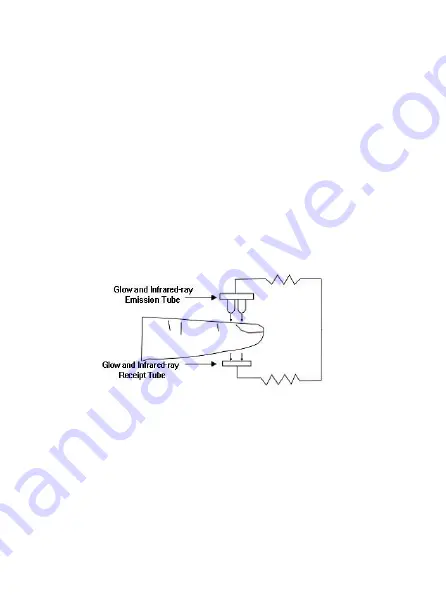
Innovo® CMS 50F PLUS User Manual
5
3 Principle
Oxygenated blood absorbs light at 660nm (red light), whereas
deoxygenated blood absorbs light preferentially at 940nm
(infra-red). Pulse oximeters consist of two light emitting diodes,
at 600nm and 940nm, and two light collecting sensors, which
measure the amount of red and infra-red light emerging from
tissues traversed by the light rays. The relative absorption of light
by oxyhemoglobin (HbO) and deoxyhemoglobin is then
processed according to the Beer-Lambert's law and an oxygen
saturation level is reported. The device directs its attention at
pulsatile arterial blood and ignores local noise from the tissues.
The result is a continuous qualitative measurement of the patients’
oxyhemoglobin status. Oximeters deliver data about pulse rate,
oxygen saturation (SpO
2
) and cardiac output.
Figure 1.
The use of pulse oximeters is limited by a number of factors:
Abnormal movement, such as occurs with agitated patients, will
cause interference with SpO
2
measurement. Low blood flow,
hypotension, vasoconstriction and hypothermia will reduce the
pulsatility of capillary blood, and the pulse-oximeter will
under-read or not read at all. Conversely, increased venous
pulsation, such as tricuspid regurgitation, may be misread by the











































